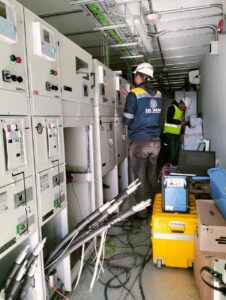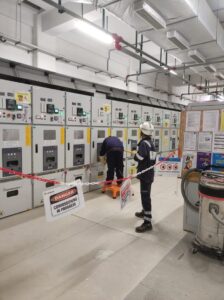Introduction
With the growing global population and increasing water scarcity, seawater desalination has emerged as a vital solution to address the world’s fresh water needs. Seawater desalination refers to the process of removing salts and other impurities from seawater to produce potable water suitable for human consumption, agriculture, and industrial uses. This comprehensive guide explores the significance, methods, benefits, and challenges of seawater desalination, highlighting its role in ensuring a sustainable future.
The Importance of Seawater Desalination
Addressing Water Scarcity
Water scarcity affects over 40% of the global population, with predictions indicating that this number will continue to rise. Seawater desalination provides a reliable and consistent source of fresh water, particularly in arid regions and coastal areas where freshwater resources are limited or overexploited.
Supporting Economic Growth
Access to a steady supply of fresh water is essential for economic development. Desalination enables the growth of industries, agriculture, and tourism in regions that would otherwise struggle due to limited water resources.
Enhancing Water Security
In times of drought or fluctuating rainfall patterns, desalination plants can act as a buffer, ensuring that communities have a stable supply of water. This enhances water security and reduces dependence on unpredictable natural water sources.
Methods of Seawater Desalination
Reverse Osmosis (RO)
Reverse osmosis is the most widely used desalination technology. It involves forcing seawater through a semi-permeable membrane that filters out salts and impurities. The process requires high pressure and energy, but advancements in membrane technology and energy recovery systems have made it more efficient.
Multi-Stage Flash Distillation (MSF)
MSF is a thermal desalination process that involves heating seawater to create steam, which is then condensed to produce fresh water. The process occurs in multiple stages, each with progressively lower pressures, allowing for efficient energy use. MSF is particularly suitable for large-scale desalination plants.
Multi-Effect Distillation (MED)
MED is another thermal desalination method that utilizes multiple effects or stages to evaporate and condense seawater. Each stage operates at a lower pressure and temperature, increasing energy efficiency. MED is known for its lower energy consumption compared to MSF and is often used in combination with other desalination technologies.
Electrodialysis (ED)
Electrodialysis involves using an electric field to move salt ions through a series of ion-exchange membranes, separating them from the water. This process is more energy-efficient than RO for brackish water desalination but is less commonly used for seawater desalination due to its higher energy requirements for high salinity levels.
Benefits of Seawater Desalination
Reliable Water Supply
Desalination provides a consistent and reliable source of fresh water, independent of climatic conditions. This reliability is crucial for regions experiencing frequent droughts or those with limited freshwater resources.
Reducing Pressure on Freshwater Sources
By supplementing freshwater supplies with desalinated water, the pressure on natural freshwater sources such as rivers, lakes, and aquifers is reduced. This helps in preserving ecosystems and maintaining ecological balance.
Technological Advancements
Continuous advancements in desalination technology have led to significant improvements in energy efficiency, cost-effectiveness, and environmental impact. Innovations such as energy recovery devices, improved membranes, and hybrid systems are making desalination a more viable option for water-stressed regions.
Enhancing Livelihoods
Access to a stable water supply supports agriculture, industry, and tourism, thereby enhancing livelihoods and promoting economic growth. In coastal areas, desalination can transform communities by providing water for irrigation, manufacturing, and other essential activities.
Challenges of Seawater Desalination
High Energy Consumption
Desalination processes, particularly RO and thermal methods, require significant amounts of energy. This not only increases operational costs but also has environmental implications, especially if the energy is sourced from fossil fuels.
Environmental Impact
The disposal of concentrated brine, a byproduct of desalination, poses environmental challenges. Brine discharge into the ocean can harm marine life and ecosystems. Additionally, the intake of seawater can impact local marine habitats.
Cost Considerations
While the cost of desalination has decreased over the years due to technological advancements, it remains higher than traditional water sources. Initial capital investment, maintenance, and energy costs contribute to the overall expense of desalinated water.
Limited Scalability in Some Regions
The scalability of desalination plants can be limited by factors such as energy availability, environmental regulations, and economic constraints. This can make it challenging to implement desalination on a large scale in some regions.
Future Prospects
Renewable Energy Integration
Integrating renewable energy sources such as solar and wind with desalination plants can significantly reduce energy consumption and environmental impact. Hybrid systems that combine multiple desalination technologies with renewable energy are being explored to enhance efficiency and sustainability.
Advanced Technologies
Research and development in advanced desalination technologies, such as forward osmosis, graphene-based membranes, and nanotechnology, hold promise for further improving efficiency and reducing costs.
Policy and Regulation
Supportive policies and regulations are crucial for the growth of desalination. Governments and international bodies need to promote sustainable practices, provide incentives for renewable energy integration, and ensure the responsible management of brine disposal.
Public Awareness and Education
Raising public awareness about the benefits and challenges of desalination is essential for gaining support and fostering sustainable water management practices. Education initiatives can help communities understand the importance of desalination and how to use water resources efficiently.
Conclusion
Seawater desalination is a critical solution for addressing the growing global demand for fresh water. While it presents certain challenges, advancements in technology and integration with renewable energy sources are making it an increasingly viable and sustainable option. By leveraging desalination, we can ensure a reliable water supply, support economic growth, and enhance water security for future generations. As we continue to innovate and improve desalination processes, it will play an integral role in creating a sustainable and water-secure world.





